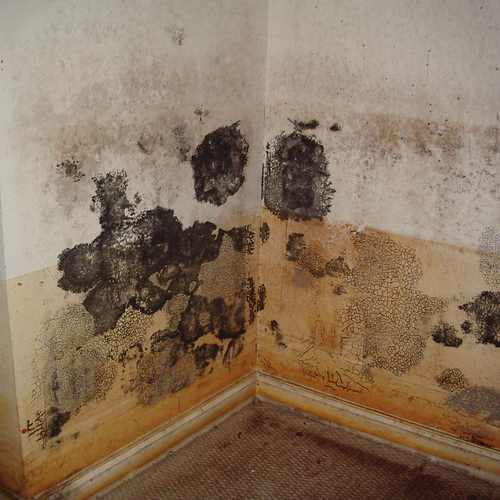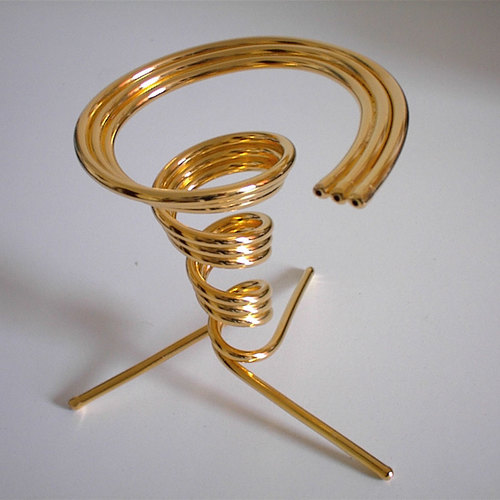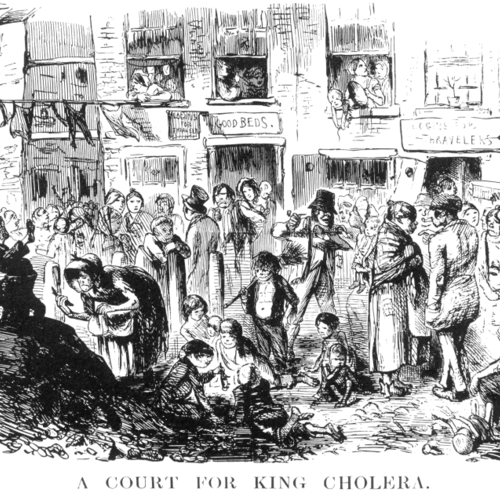
What is “healthy housing”? Scientists don’t really know for sure, but that hasn’t stopped green builders from making poorly supported claims about “healthy” and “unhealthy” homes. No one really knows which building specifications contribute to the health of building occupants — which is why I have often advised builders to be very cautious about claims that building specifications promote human health.
Of course, physicians and builders have long had fairly good data on which toxins to avoid. The list includes lead, asbestos, tobacco smoke, and most types of insecticides. There are a few other substances, including formaldehyde and radon, which are so toxic that their levels must be kept low, even when it’s impossible to entirely eliminate them from the indoor environment.
Beyond basic advice about avoiding obvious toxins, experts have few examples of building specifications that lead to improved occupant health.
That said, in recent years tantalizing clues on the links between human health and housing specifications are starting to trickle in — not enough to make firm statements, but enough to pique the interest of “healthy house” researchers.
Many of these studies look for improved health outcomes in occupants of homes that have recently received energy-efficiency improvements. Most, but not all, of these studies depend on occupants’ self-reported assessments of symptoms rather than objective criteria like the number of hospital visits.
Moreover, with most of the studies that look into “healthy housing,” it’s impossible to know which retrofit measures (out of any particular package of implemented measures) were responsible for reported improvements in occupant health.
The best data on health improvements are for families that include someone with asthma. For families without any asthmatics, however, data are sparse.
Healthy house claims
At the recent Better Buildings By Design conference in Burlington, Vermont, the keynote address was…
Weekly Newsletter
Get building science and energy efficiency advice, plus special offers, in your inbox.

This article is only available to GBA Prime Members
Sign up for a free trial and get instant access to this article as well as GBA’s complete library of premium articles and construction details.
Start Free TrialAlready a member? Log in














20 Comments
Martin, that's a pretty thorough look into what makes (or doesn't make) a "healthy home." I admire your attempt to quantify what the term means. Did you look into Lyme disease at all? I know quite a few people with chronic Lyme disease, and from what I understand, pretty much any mold infestation can set off a reaction in their compromised (or sensitized) systems. But I don't have a study to back up that claim.
You might be interested in the work of a college classmate of mine, Rishi Manchanda, a physician who gave a TED talk a few years ago on the relationship of homes and health: https://www.npr.org/templates/transcript/transcript.php?storyId=497847442.
Michael,
Q. "Did you look into Lyme disease at all?"
A. I've been looking for quite a while now at any research papers I can get my hands on. The summary above looks at what I've been able to find. I haven't run across any data on how house specifications affect people with Lyme disease -- although if any GBA readers know about such data, please share it.
The interview with Richi Manchanda was interesting, and it repeated associations I've heard many people repeat -- about the association between housing conditions and symptoms. But Richi Manchanda's observations aren't data.
My wife grew up in Florida, while I grew up in Beirut. Both of us grew up surrounded by cockroaches. While asthmatic children are often allergic to cockroaches, most people aren't. So there are many missing pieces to this puzzle.
Richi Manchanda mentioned a few other tantalizing theories -- people who live near parks are healthier than people who live in neighborhoods without parks; and low economic status and feelings of powerlessness lead to poor health outcomes. On the latter point especially, there are lots of data to support the association.
You may have heard of Michael Marmot's Whitehall studies: "Marmot discovered that health and social status are often inextricably linked — even when you control for income, education, and other risk factors. This is true if you look at countries or at cities, or even drill down to the level smaller communities. And the implication of this research is that high levels of inequality can, on their own, make people sick. Most famously, his Whitehall studies established a link between the relative rank of officers in the British civil service and their risk of disease and death. The higher an officer was ranked, the better his or her health. This was despite the fact that all civil servants were relatively well-off, with similar levels of education. Again, the stratification itself seemed to be the important factor."
Martin,
You are right - this is far too complex, and for the most part outside the expertise of builders. None of us are capable of dismissing the health concerns that residents may have about their environment, or able to say what we can do to effectively remedial them - beyond taking reasonable steps to providing conditions that make the occupants feel they live in healthy residences.
Another anecdote: My mother gets hospitalized for acute respiratory failure on average once a month. Those hospitalizations correlate quite closely to the time of the full moon. To me there are three possibilities:
- The moon suppresses her immune system.
- As a follower of astrology she is aware that the moon is full and may affect her.
- Its a correlation of unrelated events.
What do I draw from these equally un-proven alternatives? Just that I should keep some time free around the full moon.
Now that's funny Malcolm!
Great article Martin, thanks! It reminded me of the awakening we all got from the book Cradle to Cradle about the evils lurking in the products purchased for home use. It should have been forced reading for all, it would have changed lives far more than The Great Gatsby.
Nice article mr. Holladay. Not sure that I need a data study to tell me that vocs are bad, although it would be nice to have them. Things like stain protected synthetic carpet, OSB, and foams. "Healthy environments" as opposed to chemical gases.
I have anecdotal evidence also, I was exposed to isocyanates and since then I am hypersensitive to chemicals. I can quickly tell when a room is stuffy from carpet or other VOC's .
I think asthma is just an immediate and easily identifiable symptom, long-term things like cancer aren't nearly as easy to study.
Chris,
You've decided that you aren't sure that you "need a data study to tell me that VOCs are bad." In fact, studies on the effects of VOCs are useful, and it's inappropriate to make generalizations about VOCs.
VOCs are emitted by houseplants and food. Most pleasant cooking odors and fruit ripening odors are the result of VOCs. Many people find these VOCs pleasant and desirable -- so it would strike me as useful to distinguish exactly which VOCs are chemicals of concern.
In general terms most people think toxic chemical when you say VOC, and that's what I mean in this context. Sure studies are nice but the chemical companies get away without them just look at glyphosate, it's been killing people for years and finally they are having to pay in the courts. Do you think all chemicals are tested over the lifespan of a person? because it takes decades for some cancers to develop. Another thing that doesn't even come close to being tested properly is combinations of chemicals.
Isocyanates are in a lot of different paints and glues. They are what make two part paints and epoxies harden. Isocyanates cannot be filtered. You need a fresh air system with a remote air intake for protection.
In the 70s when epoxy paint was first being used at Boeing they thought conventional filter masks would work. Whole shifts of workers became functionally retarded before they figured out what was wrong.
In the late 80s I spray painted a car with isocysnates paint in an unvented garage. I thought I was protected with a brand new filter mask. It took me about three hours. Within a couple of days I had forgotten how to sign my name which is an automatic learned trait. My sneeze which had been the same my whole life drastically changed, I also could not burp properly. And I lost a significant amount of fine motor control. At the time there was no warning on the can that you needed a fresh air system. I suspected the paint but I wasn't sure what happened.
A few years later I went to the safety supply shop and asked for a respirator that would filter isocyanates. The salesperson said there was no such thing. At that time I knew what had happened to me. And later I met a person that worked at Boeing when the people were being poisoned.
Chris,
I never implied that isocyanates are safe to use inside a house. Your story is sobering -- I'm sorry to hear about your health problems.
You wrote, "Most people think 'toxic chemical' when you say VOC, and that's what I mean in this context." Your words support my point: some VOCs are harmless and delightful, and others are dangerous. We need researchers capable of conducting studies to determine the difference.
First, good article. I appreciate your even handedness with this topic.
A few thoughts.
I appreciate asthmatic studies and do find them useful. However, I believe there are many IAQ related health issues that are not indicated in asthmatic studies. Many are also likely impossible to prove except over extremely long periods of time. As you alluded to, there's a lot more that we don't know than we do. The fastest people to say that are the respiratory health folks at Mayo. And they are also quick to point out that some things that we thought we knew, we no longer do. :-) Our bodies are exceptionally complicated and exceptionally well designed.
In studying Blue Zones one bit I'm increasingly wondering about is what role fresh air and sunlight play (should being outside be the 10th element?). All of the Blue Zones are in at least somewhat temperate climates and all of the healthiest and longest lived folks spend considerable time outside every day and all or nearly all sleep with windows open at night. Do they have better IAQ than we do and that is playing a role in their exceptional health?
We know that we need fresh outside air for our health. We just don't know how much and we're still struggling with how to measure and determine if indoor air is healthy. Is CO2 a good enough proxy? What level of CO2? Seemingly our healthy target is 1000 ppm. But from everything I've read we're not achieving that, at least in the U.S. Corporations have long thought that fresh air is critical to worker performance and studies seem to indicate CO2 s/b much lower than 1000 and you even referenced a study along these lines that IIRC thought 500-600 was a better target.
Is it reasonable to conclude that we were designed to live on this planet with its air and that for best performance we want to replicate that air (sans pollution) as best we can?
I think for me, and until we know a lot more which will likely be long after our kids lifetimes, the more fresh outdoor air the better. Given the choice of a bit of energy savings vs the health of my family, my family's health wins... Until someone proves to me that less fresh air has no or extremely minimal negative health effects.
Just my opinion.
W.,
I understand your logic, and I often feel best when I spend most or all of the day outdoors.
That said, there are studies that show that tight houses may be more conducive to human health than drafty houses -- but as usual, every study raises more questions than it answers. Here's the link: "Connection between home energy efficiency and respiratory health in low-income homes ."
I very quickly read the link. First, I think they were discussing infiltration rates, not ventilation rates? The first being natural infiltration through cracks and other places, the second intentional fresh air intake either passive or active?
Drafts themselves can certainly be an issue either from a space generally being cold or someone sitting or laying somewhere with an uncomfortable draft coming across them. This is a temperature problem.
Another issue though is the quality of air coming in through infiltration through leaky walls. As that air passes through the wall cavity what is it picking up and bringing in to the house with it? Mold spores that are themselves unhealthy or that in higher concentrations are unhealthy? VOC's from insulation, glues or anything else in the wall cavity? Off-gassing from wood and other elements? Is air infiltrating through wall cavities less healthy than air coming in through direct passive or active vents? This is an air quality problem?
So tight houses are good but is that because of improved temps or improved air quality? Or both?
" I often feel best when I spend most or all of the day outdoors."
I do too, and that's a large part of why I started building rather than devote all my time to design. However I'm not sure the benefits have as much to do with where we are, as what we do. Being outside typically means being more physically active. Something unequivocally linked to better health. A day spent doing physical activity in a gym would probably make us feel the same way a day working outside in the yard would.
Malcolm,
We're in the realm of anecdotes now, not the realm of data. Concerning your postulate -- "A day spent doing physical activity in a gym would probably make us feel the same way a day working outside in the yard would" -- my reaction is, "I doubt it."
Perhaps your yard is more depressing than mine, or your gym more cheerful. For me, though, I can think of few days more depressing than one spent indoors, pedaling a stationary bicycle. That behavior is no substitute for the real thing.
Come spend an afternoon playing ball hockey in our community hall with a bunch of neighbourhood kids. Just make sure the young Powell kid isn't there. He'll hack your shins!
Sounds more fun than riding a stationary bike -- that's for sure.
A day in the gym is not necessarily a day spent pedaling a stationary bicycle. My rock gym is a fun place to spend a couple of hours. There's a diverse, happy and supportive crowd of variably aged people, all having fun together. I always feel exhilarated (though tired) when leaving the gym, and healthier in general for doing it. I do wonder about the long-term effects of exposure to chalk dust, though.
Even so, I'd substitute a day climbing real rock for a day in the gym anytime. Or a day on a mountain bike vs. a day pedaling a stationary bike. You get the drift.
(this is really more in reply to others but Martin's is the only one in the thread w/ a reply button).
I think the health issues are much longer term than how we feel 10 minutes after going to the gym. People breathing asbestos felt quite healthy every day they worked with it but over time their health very slowly deteriorated. This is the case with many types of exposure.
If the air in the gym is extremely fresh then that might be an OK option but that amount of fresh air is expensive. If the entire roof are clear skylights then even better. Or the gym is outside for the win!
(on a side note, from a long-term health standpoint moderate exercise is much better than intense exercise. Gardening or riding your bicycle to lunch are good options.)
“[Deleted]”
GBA readers interested in healthy homes should note that I have added a postscript to this article. The postcript is appended to the end of the article above.
Log in or become a member to post a comment.
Sign up Log in